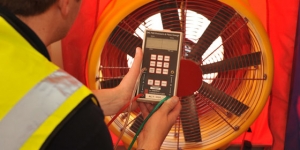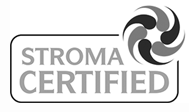How is Air Leakage testing carried out?
Air leakage is measured by using a fan pressurisation system. Our fan is installed in the doorway, all external openings are closed and all internal openings are left open. Once the fan has pressurised the inside of the building, the pressure difference is measured and compared to the external ambient conditions. The test is performed by recording a range of readings, including air pressure, within the dwelling and corresponding airflow through the fan to maintain that pressure.
All our air pressure tests are carried out in accordance with ATTMA (Air Tightness Testing and Measuring Association) TS1 Issue 2 to BS EN 13829 method B standards, and all our test engineers are trained and accredited members of the BINDT (British Institute of Non Destructive Testing).
What are the most common Air Leakage infiltration paths?
Achieving the required air permeability relies on identifying, creating and maintaining a continuous air barrier.
Historically, for buildings targeting 7-10 and using traditional construction methods, the air leakage paths have been relatively obvious and easy to address (i.e. mastic sealing and/or expanding foam). These include:
Gaps between elements of the buildings, i.e. floor to wall and/or wall to roof, which create a small path, but potentially around the entire perimeter of the building. Most often in dwellings this is a gap between the underside of the plasterboard/skirting and the floor, while in non-dwellings it is a break in the continuity at the eaves detail (between the top of the wall and the underside of the roof)
Gaps between different parts of the air barrier, e.g. the joint between membranes, boards, etc
Gaps around ‘penetrations’, i.e. windows, doors, services, etc. This problem may often be masked by suspended ceilings, bath panels, kitchen units, voids and plasterboard where the dot and dab creates a small cavity that allows air to bypass any surface sealing and escape through larger openings through the structure
Gaps around ‘awkward’ details, i.e. where the air barrier is interrupted by complicated structural members or elements of the fabric. These require attention at the design stage to identify ways of minimising these interruptions or introducing methods for bridging them to maintain continuity.
Upload your plan here for a free no obligation quote
For a free air-leakage test quote. Just upload your plan here.
Get a FREE quote










